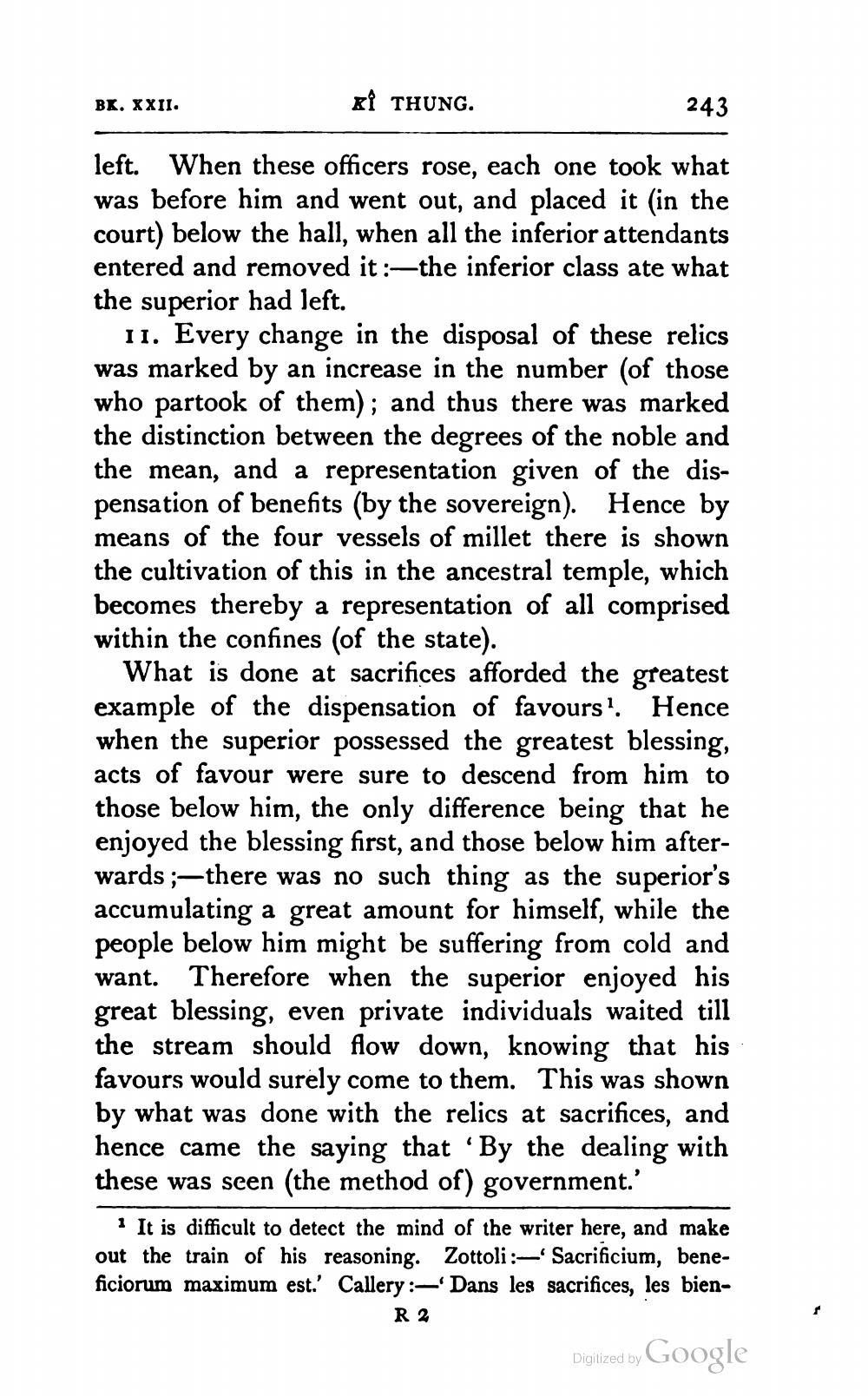________________
BK. XXII.
RÎ THUNG.
243
left. When these officers rose, each one took what was before him and went out, and placed it in the court) below the hall, when all the inferior attendants entered and removed it :-the inferior class ate what the superior had left.
11. Every change in the disposal of these relics was marked by an increase in the number (of those who partook of them); and thus there was marked the distinction between the degrees of the noble and the mean, and a representation given of the dispensation of benefits (by the sovereign). Hence by means of the four vessels of millet there is shown the cultivation of this in the ancestral temple, which becomes thereby a representation of all comprised within the confines (of the state).
What is done at sacrifices afforded the greatest example of the dispensation of favours?. Hence when the superior possessed the greatest blessing, acts of favour were sure to descend from him to those below him, the only difference being that he enjoyed the blessing first, and those below him afterwards ;—there was no such thing as the superior's accumulating a great amount for himself, while the people below him might be suffering from cold and want. Therefore when the superior enjoyed his great blessing, even private individuals waited till the stream should flow down, knowing that his favours would surely come to them. This was shown by what was done with the relics at sacrifices, and hence came the saying that ‘By the dealing with these was seen (the method of) government.'
* It is difficult to detect the mind of the writer here, and make out the train of his reasoning. Zottoli:- Sacrificium, beneficiorum maximum est.' Callery: — Dans les sacrifices, les bien
R2
Digitized by Google




